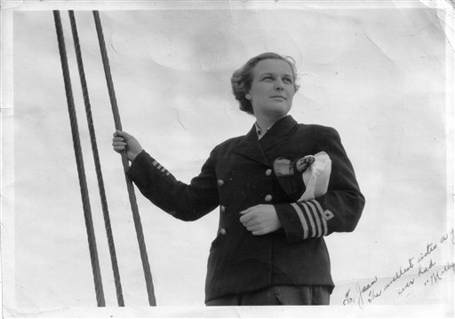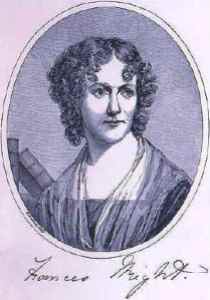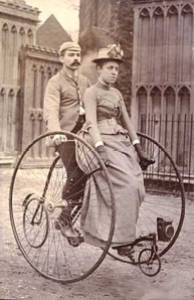
Not very many people accomplish as much as Mary Ann Shadd Cary did in her life, much less blaze a trail to do it. She has many “firsts” to her credit: first African American woman publisher in North America, first woman publisher in Canada, first woman to enroll in Howard University, first woman to graduate from Howard with a law degree (sort of, more to come) and only the second African American woman to practice law in the United States, at 60 years old no less! She was even commissioned by the governor of Indiana to recruit black soldiers to the Union army, the only woman to hold this position.
Mary Ann Shadd was born free in Delaware on October 9, 1823, to Abraham and Harriet Parnell Shadd, the oldest of their 13 children. Her father was a prosperous boot manufacturer and her mother a woman who wanted her children to be educated. Delaware was a slave state and it was illegal to educate black children, so when Mary was 10, the family moved to West Chester, Pennsylvania where she enrolled in a Quaker school. After graduating at 16, Mary began a career in teaching. For ten years, she taught in schools in New York, New Jersey, and Pennsylvania, and amazingly returned to Wilmington Delaware to open a school for black children. It was partly through her efforts that Wilmington began to make provisions for educating free black children in 1844.
During her childhood, her parents were actively involved with many prominent abolitionists. In the 1830s and 40s, her father helped lead a series of conventions led by black leaders, and when the time came they were also involved in the Underground Railroad. This was risky enough, but when the Fugitive Slave Law passed in 1850, it became even more dangerous. Even the northern non-slave states were no longer safe, and, it wasn’t only escaped slaves who were at risk. Freed slaves and free-born blacks were at risk as well. In a time where civil rights were non-existent for African-Americans, the law wasn’t much help, so many free blacks as well as escaped slaves moved to the safety of Canada. Mary Ann Shadd was one of these.
In 1851, Mary and one of her brothers moved to Windsor, Ontario, after meeting Henry Bibb and his wife at the Convention of Colored Freeman in Toronto. In Windsor, she opened a school for fugitive slaves with assistance from the American Missionary Association and eventually brought the rest of her family to join them. Mary became active in the community and began to write and promote Canada to other blacks in the United States, both slave and free. Her first published pamphlet was Notes on Canada West, and it described the virtues of Canadian living. Canada had abolished slavery in 1833 and had no agreement with the United States to extradite escaped slaves. In her book Homespun Heroines, Hallie Brown recounts an incident where a young boy, pursued by slave hunters, was captured and about to be carried off when Mary “tore the boy from the slave hunters, ran to the court-house and had the bell rung so violently that the whole town was soon aroused. Mrs. Cary with her commanding form, piercing eyes, and stirring voice soon had the people as indignant as herself–denouncing in no uncertain terms the outrage perpetrated under the British flag and demanded that these man-hunters be driven from their midst.”
She definitely was not shy. In fact, she had substantial disagreements with some of the other residents of Windsor, in particular Henry Bibb, the publisher of a newspaper called The Voice of the Fugitive. When Mary moved to Windsor, she established a racially integrated school. She believed that blacks must fight for equality and integration into society, and that self-segregation would hinder the fight. Not everyone agreed, and she came under attack by Henry Bibb in his newspaper. Rather than just defending herself, she started her own newspaper, The Provincial Freeman. She had the help of Samuel Ringgold Ward, a newspaper man in his own right, who agreed to be the editor, but it seems likely that he was editor primarily in name only and that Mary was the driving force and primary writer and editor for the paper. The Provincial Freeman gave Mary a way to get her message out about the advantages of moving to Canada, but also about other causes important to her such as women’s rights.

Financing was difficult, and they published the paper off and on between 1853 and 1859. Mary spent a good deal of time traveling back in the United States, distributing her pamphlets, extolling the virtues of Canada, and raising money to keep the paper going. This was a challenge, because in 1856 she married Thomas Cary. Thomas was a barber with three children, but it seemed to work well for them even though she was often away. She and Thomas were both still very involved in the abolitionist cause and in 1858 attended John Brown’s Constitutional Convention. They were friends with Osborne Perry Anderson, the only surviving African-American member of the raiding party, and Mary later helped him prepare his memoir, A Voice From Harper’s Ferry, for publication in 1861.
Mary and Thomas had two children Sarah and Linton, but Thomas died while Mary was pregnant with Linton and she found herself in a position of having to support two young children and three teenagers. She continued teaching, but wanting to be of service to the war effort, she returned to the United States. In 1863, President Lincoln called for volunteers and Mary as always wanted to be of service, so she was commissioned by Levi P. Morton, the governor of Indiana, to recruit black soldiers for the Union army.
At the end of the war, Mary had a decision to make. Although she considered life in Canada a good option, she decided to remain in the United States to help in the assimilation of the newly freed slaves. A strong believer in self-determination, and believing in the importance of education for this purpose, she obtained a US teacher’s certificate and relocated in 1868 to Washington, D. C. She eventually became a principal in the D.C. public schools and enrolled in Howard University.
There seem to be different accounts of her graduation and acceptance to the District of Columbia Bar, one stating that she was the first black woman to become a lawyer in the US and others say she was the second. Mary Ann Shadd Cary is on the roles of the senior class of 1870 at Howard; however, it appears that she was refused her law degree because she was a woman. In the meantime, Charlotte E. Ray graduated in 1872 and was admitted to the bar in Washington D.C. under the name C. E. Ray. (I’m sure the assumption was that C. E. Ray was a man!) So Charlotte Ray became the first black woman lawyer in the US and Mary was awarded her law degree in 1883.
Mary was a strong believer in self-determination whether black or white, male or female. So while her primary work was as an abolitionist and in education, she was also involved in the suffrage movement. During her years in Washington D. C. she continued writing, joined the National Woman Suffrage Association, working with Elizabeth Cady Stanton and Susan B. Anthony, and testifying before the House Judiciary Committee. She also founded the Colored Women’s Progressive Franchise in 1880 to work toward equal rights for women.
Mary Ann Shadd Cary continued to speak and write as long as she was able. She died on June 5, 1893, having blazed a trail for women both black and white. As a teacher, writer, publisher, speaker, in the cause of abolition and equal rights for women she was truly an amazing woman!
Resources
Mary Anne Shadd Cary: Abolitionist by Adrienne Shadd
Homespun Heroines and Other Women of Distinction ed. Hallie O. Brown
































